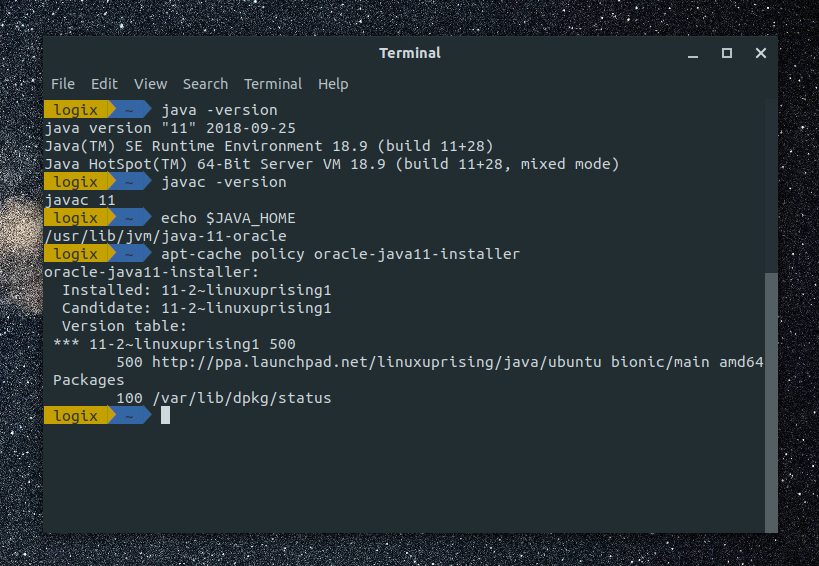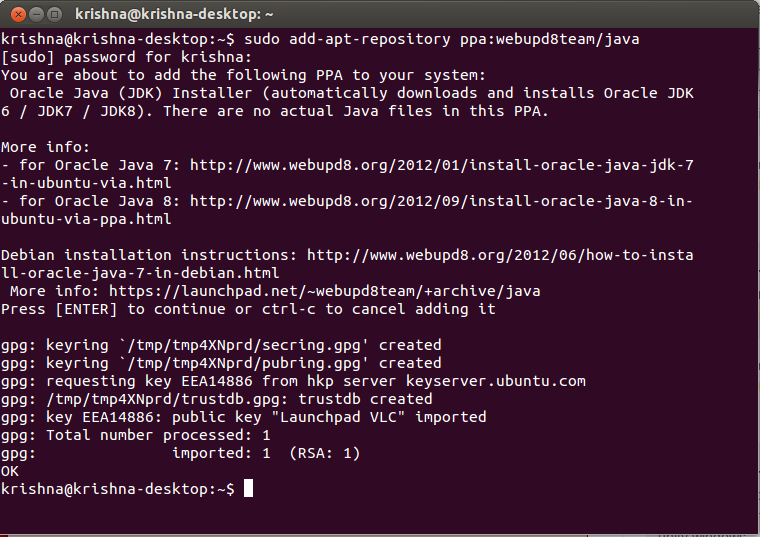

You should see the following output: /usr/lib/jvm/jdk1.6.0_31 Type the following commands to finish the setup and verify that everything is setup correctly. Or if you do, ensure that you change magic quotes to straight quotes in your editor.Įnter the following at the bottom of the file: This will cause problems when you try to use your JVM in certain applications.ĭo not copy/paste the JAVA_HOME value below. WordPress displays the quotes around the JAVA_HOME value below as magic quotes.

Open a terminal, then enter the following commands: sudo vi /etc/environment Create the JAVA_HOME environment variable Which is followed by a long usage message. Java HotSpot(TM) 64-Bit Server VM (build 20.6-b01, mixed mode) javac -version Java(TM) SE Runtime Environment (build 1.6.0_31-b04) There is only one alternative in link group javaws: /usr/lib/jvm/jdk1.6.0_31/bin/javawsĪs a final step, let’s test each of the commands to ensure everything is setup correctly. However, if you get a list of options, just type in the number of the path to the Oracle javaws command, and press Enter. sudo update-alternatives -config javawsĪs with javac, I did not have the OpenJDK version of javaws installed, so my output was simple. In my case, I had not previously installed the OpenJDK javac binary, so my output looked like the following: There is only one alternative in link group javac: /usr/lib/jvm/jdk1.6.0_31/bin/javac sudo update-alternatives -config javacįollow steps similar to those listed above if you are presented with a list of options. Press 1 on your keyboard, then press Enter. On my system I did the following (change the number that is appropriate for your system):
#DOWNLOAD JAVA UBUNTU MANUAL#
* 0 /usr/lib/jvm/java-7-openjdk-amd64/jre/bin/java 1051 auto modeġ /usr/lib/jvm/jdk1.6.0_31/bin/java 1 manual modeĢ /usr/lib/jvm/java-7-openjdk-amd64/jre/bin/java 1051 manual mode

Read through the list and find the number for the Oracle JDK installation (/usr/lib/jvm/jdk1.6.0_26/bin/java) There are 2 choices for the alternative java (providing /usr/bin/java). You will see output similar to the following (although it’ll differ on your system). "/usr/lib/jvm/jdk1.6.0_31/bin/javaws" 1 sudo update-alternatives -config java "/usr/lib/jvm/jdk1.6.0_31/bin/javac" 1 sudo update-alternatives -install "/usr/bin/javaws" "javaws" \ "/usr/lib/jvm/jdk1.6.0_31/bin/java" 1 sudo update-alternatives -install "/usr/bin/javac" "javac" \ sudo update-alternatives -install "/usr/bin/java" "java" \ The next 3 commands are split across 2 lines per command due to width limits in the blog’s theme. sudo mkdir /usr/lib/jvm sudo mv jdk1.6.0_31 /usr/lib/jvm The jvm directory is used to organize all JDK/JVM versions in a single parent directory. After downloading, open a terminal, then enter the following commands.Ĭd ~/Downloads chmod +x jdk-6u31-linux-圆4.bin.Download the JDK to your ~/Downloads directory.
#DOWNLOAD JAVA UBUNTU 64 BIT#
I have a 64 bit version of Ubuntu 12.04 LTS installed, so the instructions below only apply to this OS. Mainly I have changed the JDK from 1.6.0_26 to 1.6.0_31 as this is the recommended JDK for CDH4.
#DOWNLOAD JAVA UBUNTU UPDATE#
This is an update to an older version of this post. The answer is that Oracle JDK 6.0 update 31 is the JDK recommended by Cloudera when installing CDH4 (Cloudera Distribution Hadoop v4). The first question is why are we installing an old JDK.


 0 kommentar(er)
0 kommentar(er)
